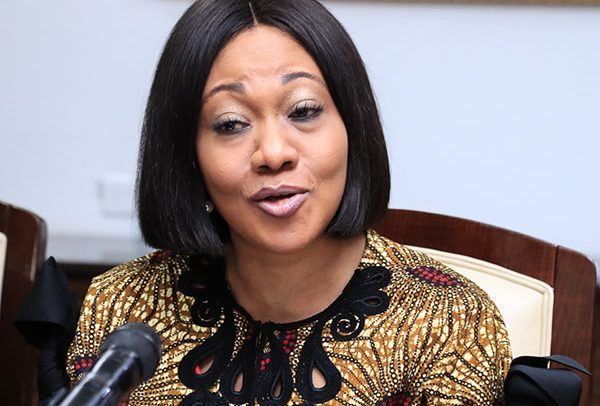EC boss, Jean Mensa
Contrary to reports that the Electoral Commission (EC) may be wasting money on the new voters’ register, the commission will rather save money running into millions of Ghana Cedis.
DAILY GUIDE has learnt that the EC will be saving not less than GH¢173 million on a new register compared to refurbishing or upgrading the existing Biometric Voter Management System (BVMS) which will cost more.
The EC may spend $74,364,500 on refurbishing the old BVMS supplied by Superlock Technology (STL) as against procuring new BVMS for 2020 at a total cost of $56,000,000, saving $18,364,500 or GH¢104,677,650.
Not only BVMS will the commission spend money on, it will also upgrade the Data Centre or acquire a new one.
To refurbish the old Data Centre with one year maintenance cost, the EC will spend not less than $19,000,000, whereas to acquire a new upgraded Data Centre with three years maintenance cost is $7,000,000. The EC is, therefore, saving $12 million, amounting to GH¢68.5 million on the Data Centre.
This brings total savings to GH¢173,077,650 as against refurbishing the old system.
Opposition Against New Register
The opposition National Democratic Congress (NDC) and its allies, mostly smaller parties, are pushing for the rejection of a new register claiming that it is just a waste of the country’s scarce resources.
However, the cost benefit analysis conducted by the EC indicates that the country benefits more in terms of cost as well as well as technology as the commission will procure modern-day technology with enhanced features that may eliminate human interference.
The EC insists it’s less expensive to compile a new register than to rely on the biometric system supplied by STL in 2012 which is outdated and has reached ‘end use’.
The commission had less access to the code as the contract was vendor locked-in and that any cost to use the current BVMS had to do with quotations from STL only.
Some civil society organizations (CSOs) who had met the EC over the new register last Thursday also joined the fray, questioning the quest for a new register on the basis that the country can save resources for other use.
The EC parried the argument, stressing that the country is better off embarking on a new register than doing a surgical operation to the existing one.
IT Team Briefing
The EC IT team at media interaction with journalists on Thursday rejected the claim of expensive venture to undertake a new register, saying that acquiring the new Biometric Voter Management System (BVMS) is the way to go, explaining that the cost of maintaining the old Biometric System is $74,364,500 while the total cost for new BVMS system is estimated at $56 million. These include Biometric Voter Registration (BVR) kits and the Biometric Verification Devices (BVD).
Giving further breakdown of the cost of the entire process, it said the total cost of using the old BVR system for the 2020 election is $38, 692,500. This includes cost of refurbishment of some BVR kits used in 2016 and the acquisition of new ones. The number of kits used in the 2016 registration was 5,500 and number of kits that were refurbishable was 1,500 and the unit cost of refurbishing was $3500, pegging the total cost of refurbishment at $5,250,000.
The EC indicated that the country also needs an additional 6500 kits at a unit cost of $5145, pegging total cost of additional kits at $33,442,500.
However, for the new system, the number of BVR kits required for the 2020 election is 8,000 at a unit cost of $3,000, making the total cost for the new BVR at $24 million.
Similarly, the EC intends to acquire some 80,000 BVD kits at a unit cost of $400 making a total of $32 million compared to the $35,672,000 if it takes the path of refurbishing and purchasing additional BVDs from the previous vendor.
With this breakdown, the EC seeks to save the Ghanaian tax payer a combined total of GH¢173,077,650 ($30,364,500).
Old BVR System
The EC argues that none of its IT staff at the commission was trained on the BVMS, and that the commission was completely reliant on the vendor for the management of the system. Simply put the commission was “vendor locked-in.”
It further explained that the application server used for the online VMS was limited by allowing only 200 concurrent connections as against EC’s 260 district offices nationwide each with at least 2MVMS machines.
This had hampered the online registration process significantly during the just-ended limited registration exercise, it said.
The EC said with the old system, there was no business continuity or an IT disaster recovery plan.
New System Advantages
According to the EC, the new server hardware comes with three, four or five year’s warranty and support coverage.
It argues that other system components of the new system are latest technology, providing higher performance.
It also has higher memory capacity than the older server would support, and likely less expensive memory.
The EC intends to intensify education on the new BVR in the coming days to give the assurance that the new system is the best for the crucial 2020 election.
Fortune Alimi


